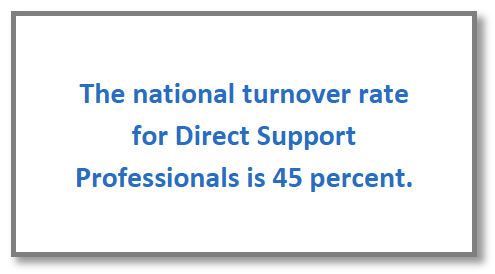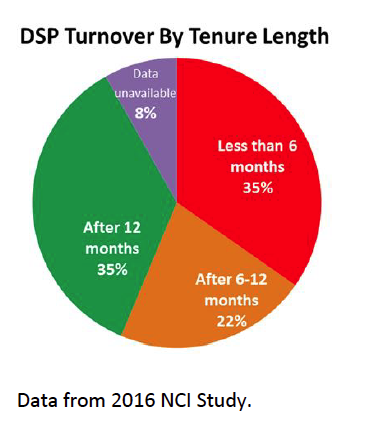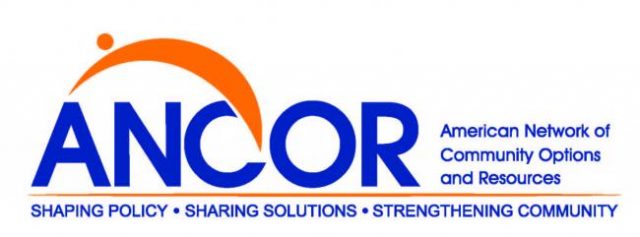Addressing the Disability Workforce Crisis of the 21st Century
 The Direct Support Professional workforce shortage is a national public health crisis. Direct support professionals are the backbone of publicly funded long-term supports and services for people with intellectual and developmental disabilities (IDD) such as autism, cerebral palsy and Down Syndrome. These professionals are integral to helping individuals with disabilities live successfully in the community, avoid more costly institutional care, and enable states to comply with the integration mandate of the Americans with Disabilities Act.
The Direct Support Professional workforce shortage is a national public health crisis. Direct support professionals are the backbone of publicly funded long-term supports and services for people with intellectual and developmental disabilities (IDD) such as autism, cerebral palsy and Down Syndrome. These professionals are integral to helping individuals with disabilities live successfully in the community, avoid more costly institutional care, and enable states to comply with the integration mandate of the Americans with Disabilities Act.
According to the National Core Indicator’s 2016 survey of 17 states, the average turnover rate for direct support  professionals is 45 percent. This frequent churn of staff is highly disruptive to the development of skills critical to gain independence and access community living, compromises health and safety, and is increasingly impacting the ability of states and providers to serve people and families on waiting lists for services. This affects individual and family income, health and safety, and participation in society.
professionals is 45 percent. This frequent churn of staff is highly disruptive to the development of skills critical to gain independence and access community living, compromises health and safety, and is increasingly impacting the ability of states and providers to serve people and families on waiting lists for services. This affects individual and family income, health and safety, and participation in society.
Key factors in the workforce crisis are:
 Current Medicaid provider rates perpetuate poverty level wages. Providers, price-takers and not price-setters, struggle to compete against other employers to attract and retain qualified staff;
Current Medicaid provider rates perpetuate poverty level wages. Providers, price-takers and not price-setters, struggle to compete against other employers to attract and retain qualified staff;
- Limited opportunities for career advancement;
- Public policy that has been slow to reflect advances in administrative, assistive and other technologies that promote staff efficiencies;
Low public awareness and recognition for the DSP occupation challenge employer recruitment strategies;
The workforce is primarily composed of working-age women, but in the
coming decade far less women will be entering the entire labor market. This will make it even more difficult to staff positions even as demand for services is expected to markedly rise.
Data from 2016 NCI Study.
ANCOR’s solutions include:
- Proposals for greater federal and state investment that would lead to higher wages and better reflect realities in the field – such as using more appropriate rate setting tools;
- Examples of public awareness campaigns and recruitment “best practices”;
- Guidelines for more effective use of technology;
- Different career models that provide opportunities for promotion and specialization;
- Suggestions for additional groups providers could recruit into the DSP occupation.
The national turnover rate for Direct Support Professionals is 45 percent.
Core Takeaway:
Stakeholders have already given a lot of thought to how to solve the DSP workforce crisis over the past decade. However, the current fiscal climate, low political appetite and lack of public awareness or appreciation of these services make it hard to foster innovation in this field. ANCOR hopes to foster discussion and policy initiatives that will allow DSPs and the people they support to thrive in the manner they deserve.
Contact: Ms. Esme Grant Grewal at egrant@ancor.org or Ms. Doris Parfaite-Claude at dparfaite-claude@ancor.org.




